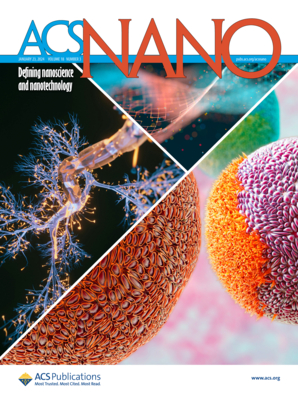Methylammonium-Free Perovskite Photovoltaic Modules
IF 15.8
1区 材料科学
Q1 CHEMISTRY, MULTIDISCIPLINARY
引用次数: 0
Abstract
For perovskite photovoltaic industrialization, it is essential to simultaneously achieve high conversion efficiency, long-term stability, and scalable fabrication of modules. Halide perovskites with the ABX3 structure are composed of A-site monovalent cations, (e.g., formamidinium (FA+), methylammonium (MA+), and Cs+), B-site divalent cations (predominantly Pb2+), and X-site halide anions. Though the incorporated MA cations can facilitate the nucleation and growth of perovskite films, their volatility undermines the thermal stability. α-FAPbI3 exhibits an optimal bandgap, but both it and α-CsPbI3 are susceptible to converting into the nonphotoactive δ-phase at room temperature. However, their FACsPbI3 alloy effectively counteracts the imperfections in the tolerance factor, enabling the formation of a room-temperature photoactive phase. Hence, the development of large-area, high-quality, and MA-free perovskite films remains a substantial challenge for efficient photovoltaic modules. This review first discusses the impact of A-site cations on the phase stability of perovskite structures and subsequently examines the film growth mechanism. Then, we summarize the MA-free perovskite photovoltaic modules and highlight advances in the CsPbX3 (Br–/I–), FAPbI3, and FACsPbX3 systems. Finally, we propose potential directions and challenges toward perovskite photovoltaic industrialization.

求助全文
约1分钟内获得全文
求助全文
来源期刊

ACS Nano
工程技术-材料科学:综合
CiteScore
26.00
自引率
4.10%
发文量
1627
审稿时长
1.7 months
期刊介绍:
ACS Nano, published monthly, serves as an international forum for comprehensive articles on nanoscience and nanotechnology research at the intersections of chemistry, biology, materials science, physics, and engineering. The journal fosters communication among scientists in these communities, facilitating collaboration, new research opportunities, and advancements through discoveries. ACS Nano covers synthesis, assembly, characterization, theory, and simulation of nanostructures, nanobiotechnology, nanofabrication, methods and tools for nanoscience and nanotechnology, and self- and directed-assembly. Alongside original research articles, it offers thorough reviews, perspectives on cutting-edge research, and discussions envisioning the future of nanoscience and nanotechnology.
 求助内容:
求助内容: 应助结果提醒方式:
应助结果提醒方式:


